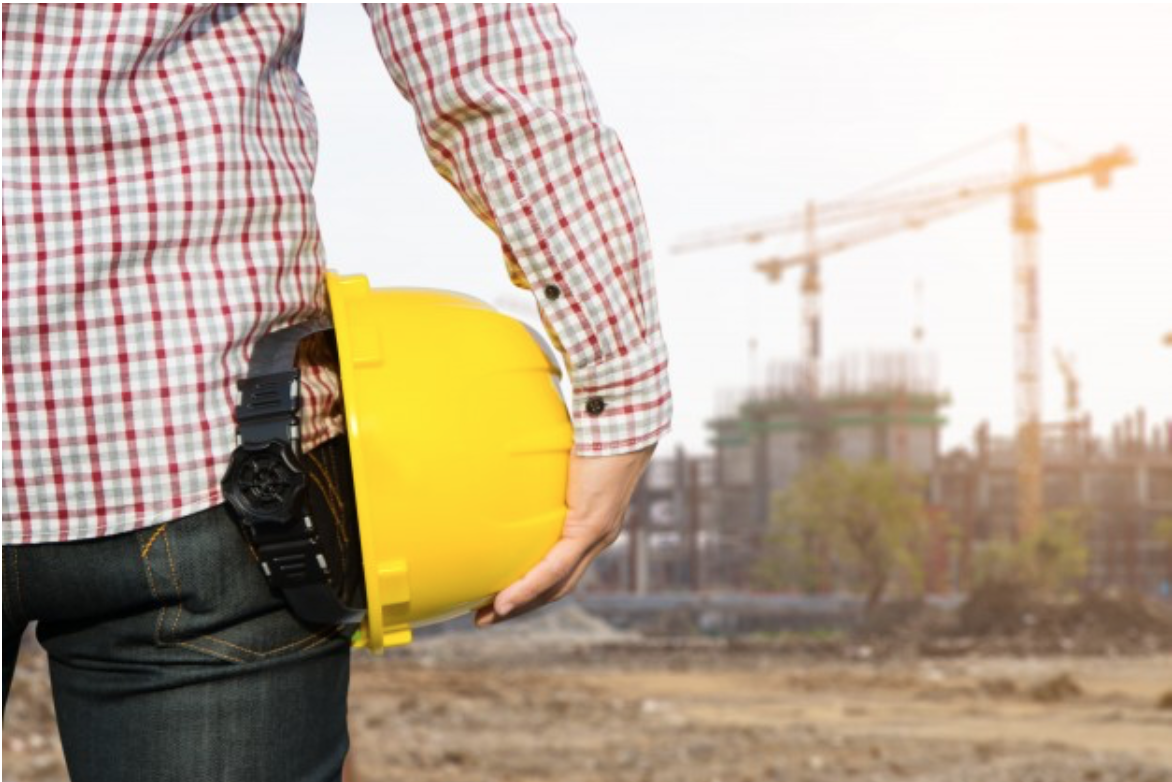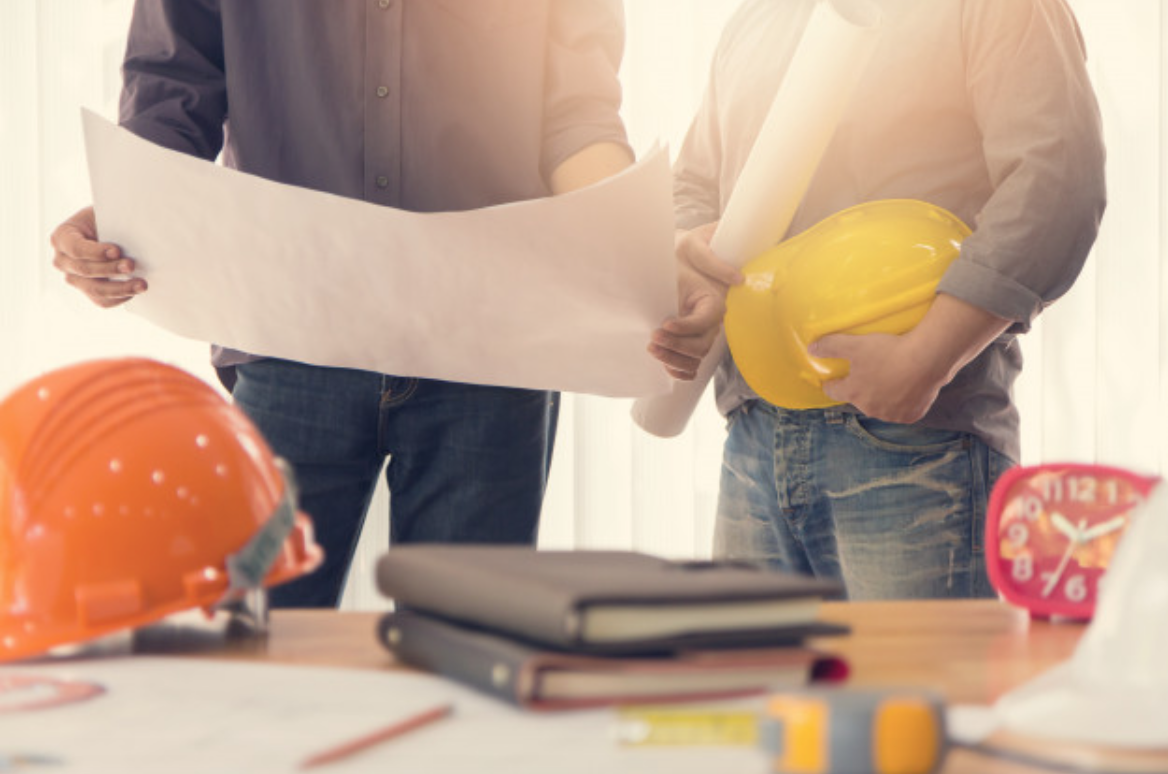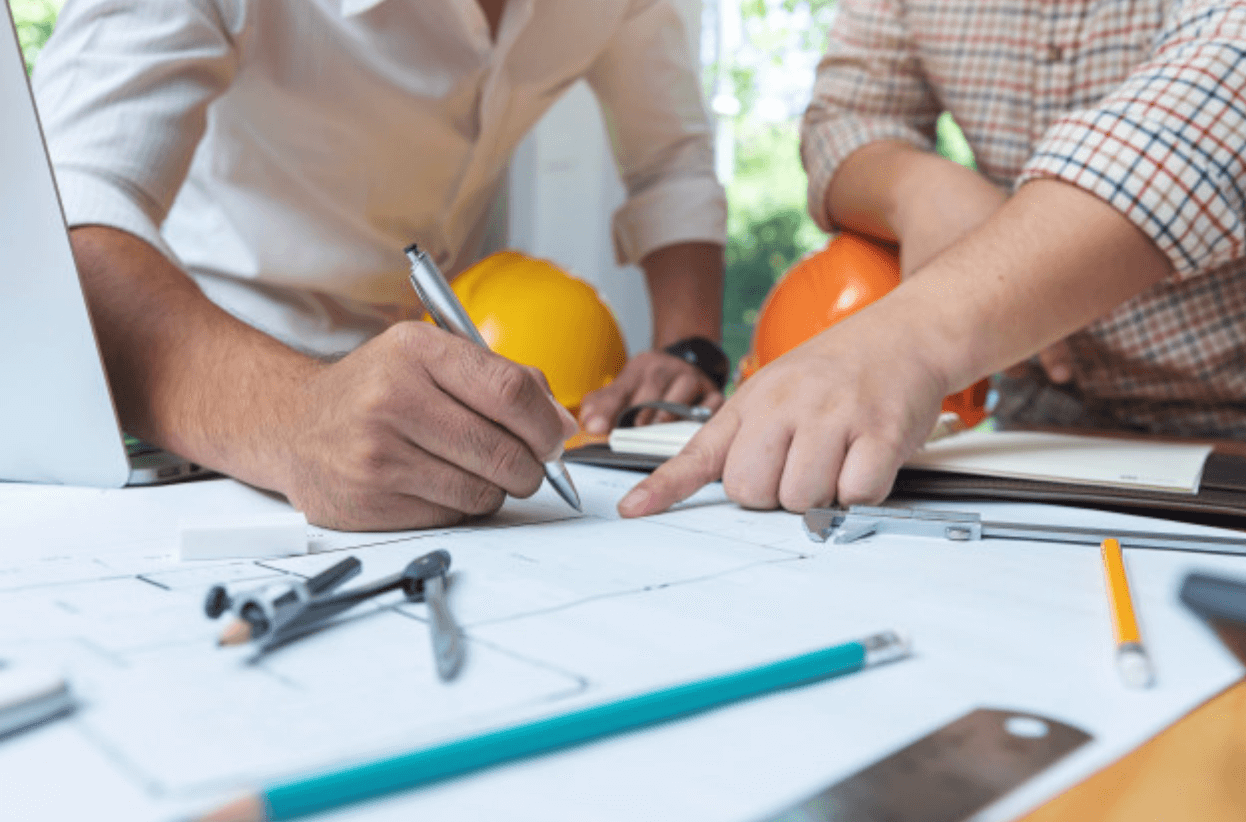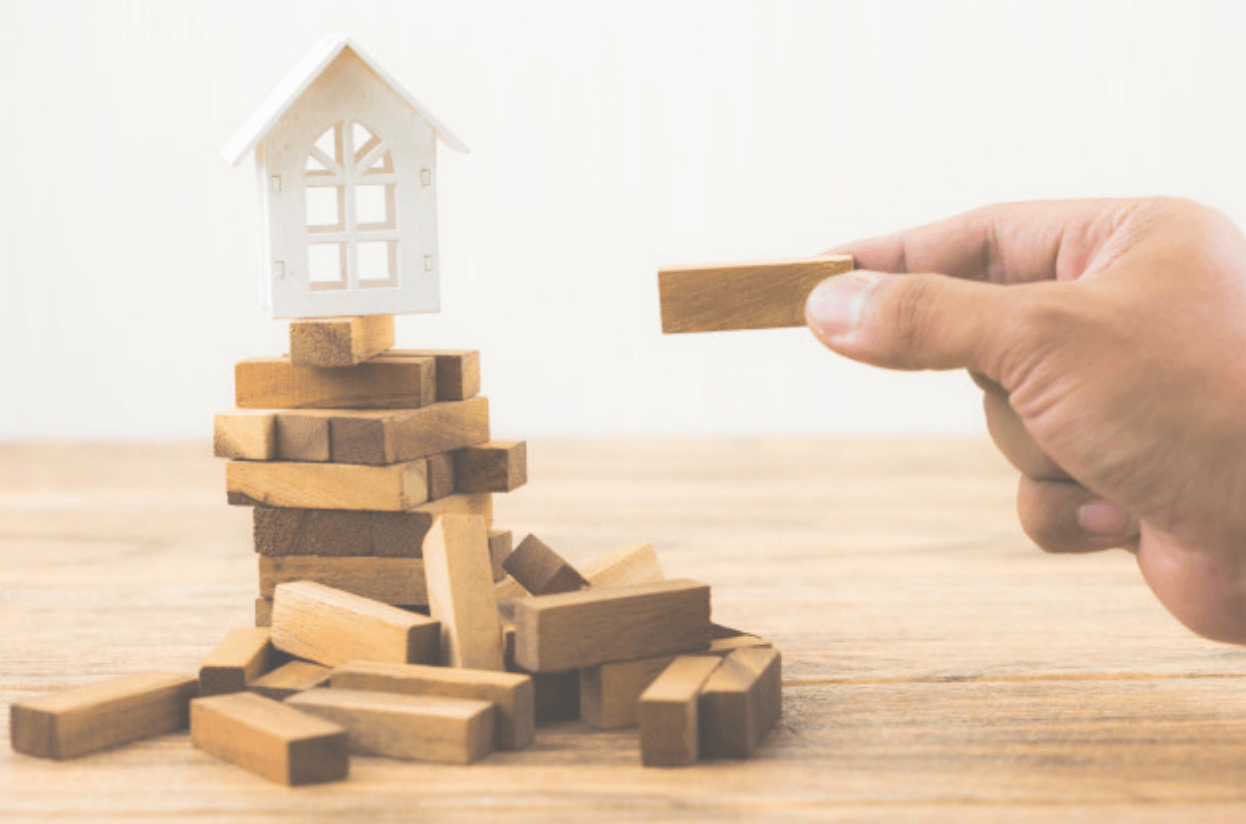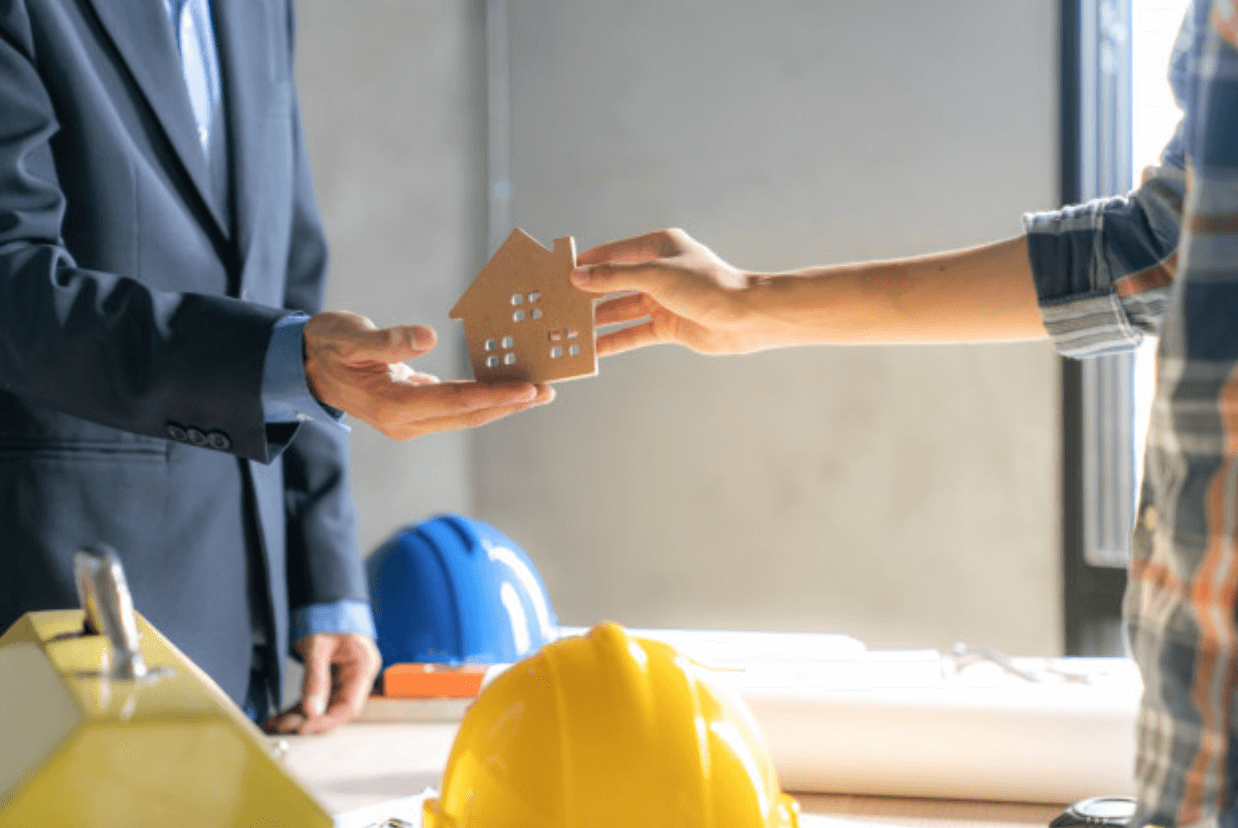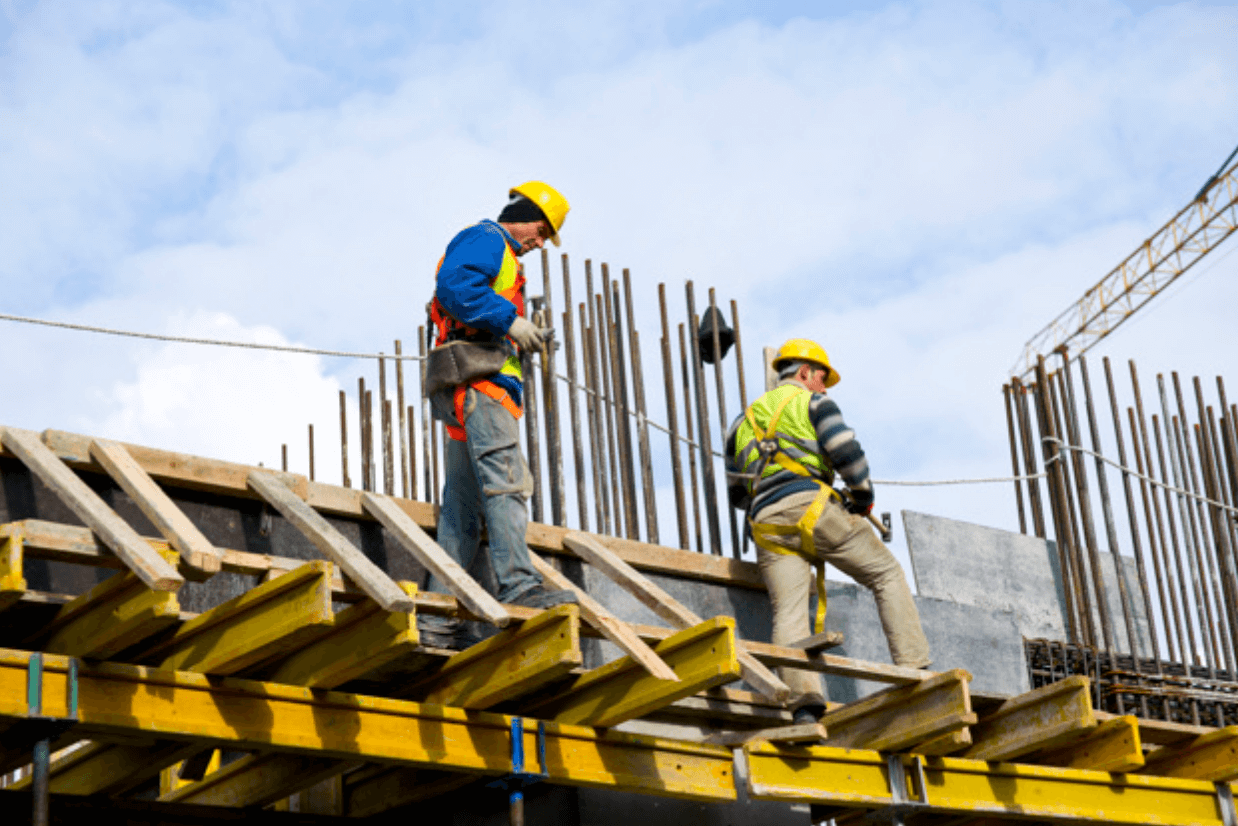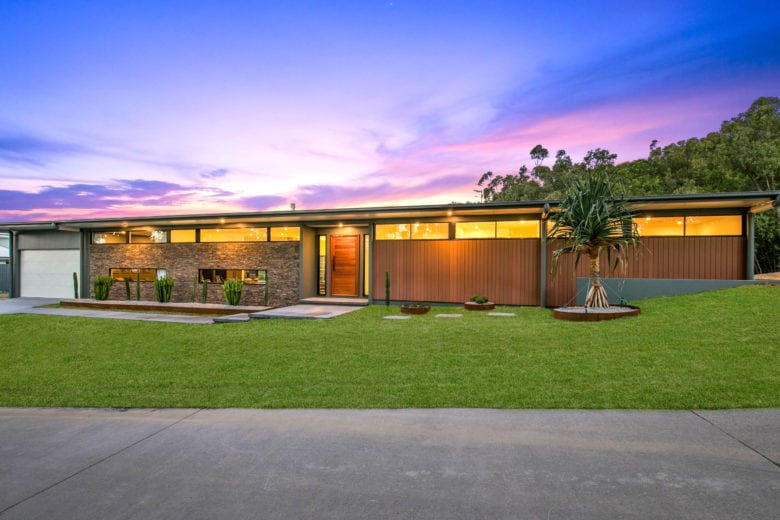Here's one of our recent Building sites
How Long Does It Take To Build A House From Start To Finish
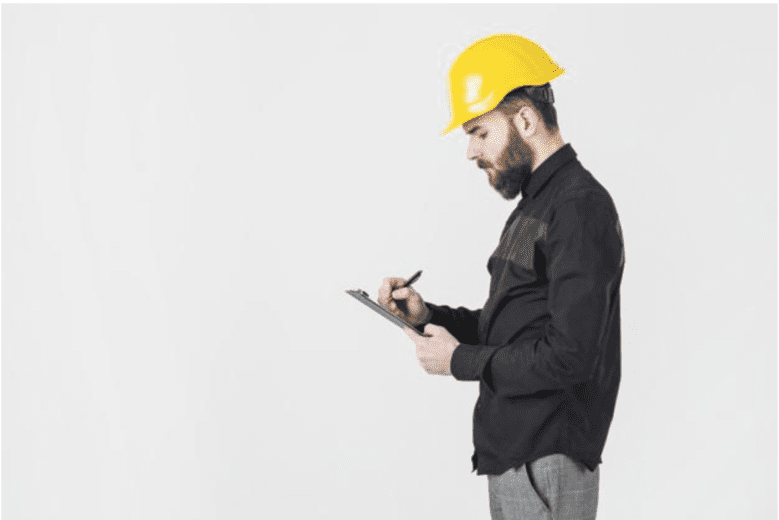
You have bought your perfect piece of land, found your dream home layout and met with your builder. You are eager to book the removal truck, but how long should you expect to wait?
In Australia, the average time from purchase of land to moving day is anywhere up to 12 months. Quality builders are very good at predicting a timeframe to assist in planning your transition, however it is best to stay as flexible as you can and keep communication open. You may be able to carry a loved one over the threshold in as little as six months, but this depends on several key factors.
Factors Affecting Build Time
1. The Building Plan
Sometimes, you can jag the ideal building plan and be ready to roll with it, but most of the time there are amendments that need to be made. Take the time to sit with your builder or architect and thoroughly inspect the plan for anything that may not work for you. They can adjust a multitude of things to ensure you get the house that suits you and your family.
In terms of the actual build, it also goes without saying that more complex, larger dwellings will take longer to construct. If you have multiple storeys, above-average number of rooms or extras such as a super-sized alfresco area, allow additional time.
2. The Land
Another major factor in delaying the building process is the condition of the land you are building on. Flat, barren land doesn’t generally take too much in the way of earthworks. In this case, you can expect your pad down in just a couple of weeks from signing on the dotted line. However, if you have steep slopes, drainage issues or large trees to contend with, you could be up for a bit more of a wait (and cost).
3. The Season
As much as builders try to work no matter the weather, there are safety concerns that come with the job and sometimes they need to delay the build for a day or two. For example, roofers must be selective in the work they do when it is raining, as the risk of slipping and falling is greatly increased. Similarly, scorching hot days can pose a health risk for any outdoor worker, with not only sunburn, but potentially deadly heatstroke a real possibility. Safe working conditions are regulated by law, so be respectful if your building team needs to take off for a few days to keep themselves safe.
4. The Type of Build
Common methods of building, such as brick, have a relatively standard timeframe for completion. Notwithstanding supply error, builder mistake or other extenuating circumstance, the bones of your house can be up in as little as a few months. Prefab concrete is gaining popularity and is quick to install, as are some newer cladding options now on the market. If you choose something a little out of the box, such as stonework, timber or mud, you may need to hire a builder skilled in this particular application and be prepared to give them time to complete it perfectly.
Average timeframe for each stage of the build
Now that you know the four key factors for determining how long it takes to build a house from start to finish, what are the rough timeframes you should expect?
Building is completed in several stages. Each stage is listed below, with an approximate time taken.
- Site testing and earthworks to prepare the area for building.
Approximately one week. - Laying of the concrete slab.
Two weeks (weather permitting for the pour and set). - Construction begins, starting with the frame. The walls and roof framework are put in and electrical chasing is installed
Four to eight weeks.
- Lockup stage – the details go in. This includes pipework, plasterboard on the walls, roof and ceiling finishings, rendering, doors and window panes.
Four to eight weeks - Finishing it all off – where your house becomes a home. In goes the cabinetry, cornicing and skirting, shelving and built-in furniture, airconditioning and tiling.
Six to eight weeks. - Practical completion – your house is now livable, but there are the finishing touches to put in that really bring it all together. This includes the landscaping and irrigation, painting, floor coverings, letter box, clothesline and all the little bits and pieces that make the place fully functional.
Up to eight weeks.
As you can see, the building process can be quite varied, with many potential delays along the way. Holdups with planning or earthworks, inclement weather, complex building requirements or even the occasional builder scheduling or supply issue can all set moving day back a little – but it will be worth it in the end. Talk to your builder about their proposed timeframe before you start, so you can better manage your interim living arrangements and finances accordingly.
Take the first step – Optam have an 8 stage Design & Construct Process
Author’s Bio

What are the Steps to Building a House?

The thought of building a brand new house can be both exciting and a bit scary for some people but a new home can give you the freedom to enjoy a property designed especially to suit your particular lifestyle. The one main thing to get right from the very start is the property management. A large build such as a house needs careful management every step of the way. The following information will give you an understanding of the process from go to whoa to help you better enjoy your venture.
1. Choosing a Design For Your Home
The very first step on this road should be knowing what kind of house you want and need. There are so many choices out there for home builds, from architectural designs, project homes, house and land packages, custom-built properties or Do-It-Yourself kit homes. They all have their advantages and disadvantages, benefits and costs and so you need to sort out what kind of house you want, where you want it, what you need, and importantly, what you can afford.
2. Choose a Block of Land For Your Build
The reason you need to take time with the design of your new home is that, whether you’re doing a knockdown and rebuild, or building on a block you’ve already bought, your building design has to be compatible with the block. If you don’t check all of this out first, it can be a big problem when it comes to building costs. So, make sure you employ an expert who can inspect the building site before you commit to ordering the design, or buying the land. Location and orientation are also big factors in the long term liveability of your new home.
3. Choosing the Builder To Construct Your Home
Don’t just hire any old builder, or the first one you make enquiries with, but shop around. It’s really important to do your research so you find the right builder for your particular project. Ask people whose homes you admire what their process was like; were they happy with the builder, the price and the end product? Ask various licenced builders if they are interested in providing a quote on your new house, they’re availability to work within your timeframe and contact details for previous clients. Preliminary design stage is a good time to request ballpark costings for each aspect of your build before working drawings and engineering is completed. With any contracts you are given, make sure it covers absolutely everything and there’s an agreed timeline for completion. You also need to get the home indemnity insurance, preparation of plans agreement, contract variations agreement and the building specification and inclusions before signing any contracts
4. Applying For Your Home Loan
Before you begin the building process, you need to be aware that one of the crucial factors in a successful project is keeping your finances in order, and also, after you know what it will cost, have your home loan approved and ready to go. If you’re .lucky enough to have savings in a term deposit account make sure you can withdraw the amount you need for your home loan deposit. Get your lawyer or conveyancer to check the building contract and find out how progress payments will be decided. For instance, you might be able to spell out that inspections will be necessary to make sure the building is progressing to the standard needed before any payments are to be made. You can always ask for monthly progress claims rather than set progress payments but you will need to ask for that in a quote. Make sure you take on board the fact that there will be Stamp Duty costs and legal fees to pay on your loan application.
5. Signing the Building Contract
You’ll need to review the contract carefully with your lawyer or conveyancer once you’ve agreed to the price. Stories abound in the industry about the many pitfalls that occur due to contract errors. Ensure that you are feeling confident enough to sign the documents because it can be costly to make changes down the line. Also, check the local council laws and regulations in the area of your build, to make sure your contract complies with their standards and requirements. Make sure also that your builder is the one responsible for obtaining permits and building licenses from the various and relevant authorities. Insurance is something to think about as well before the building work begins, to protect the new property, your land, and the safety of anyone visiting the building site.
6. Monitor the Building of Your New House
A pre-start meeting with your builder is usually held before the beginning of construction so you can decide on the final materials and fittings for your house. You should remain involved in every further stage of the build so you can decide on elements of the design and to ensure everything is done on budget and on time. You could keep a diary to jot down important details of the build; things like any discussions you have with the builder, the weather that might halt work, progress updates, copies of notices and mail relating to the build and backed up with photographs of every stage. You can hire an independent building manager or consultant to monitor the construction for you if you don’t have the time or don’t feel confident.
7. Handing Over the Keys
You should be able to collect the keys to your new home about a week after the completion of the construction and then you can make any final payments and move in. But do ensure that you have a copy of all the relevant certificates and warranties outlined in your contract and that you have been given the builder’s written authority that the house finished and it’s safe to move in.
8. Take the first step – Optam have an 8 stage Design & Construct Process
References:
Author’s Bio
Alex Morrison has been an avid digital marketer for over 10 years. In this time he has worked with a range of businesses giving him an in depth understanding of many different industries including home improvement, financial support and health care. As the owner of Integral Media he is now utilising his knowledge and experience with his rapidly increasing client portfolio to help them achieve their business goals.
Property Development is a Community Service
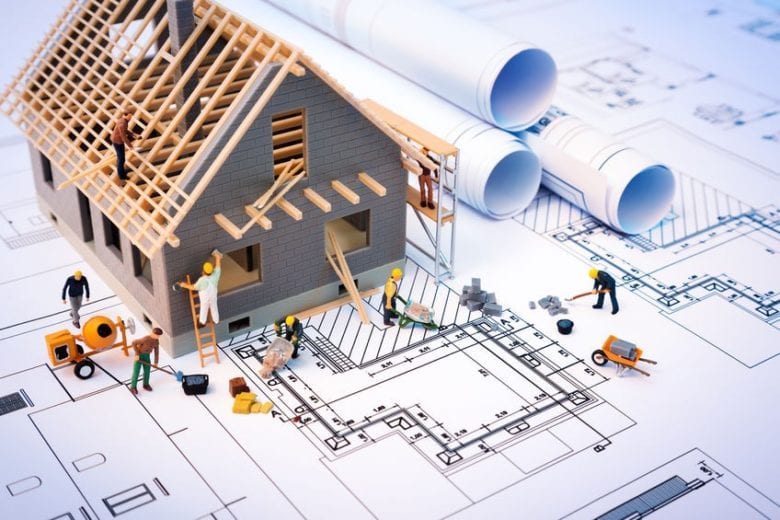
Recently I bought a second hand mower from a retired widower and upon entering his garage I could not help but notice 15 – 20 bicycles of varied styles and states of repair neatly lined up.
The sprightly pensioner explained that, to fill his days he collects discarded bicycles and restores them to offer back to the public for the price of parts as a service to the community.
This event helped me appreciate that developing property is also a community service, regardless of the detractors and ‘NIMBY’ objectors by way of offering the public a recycled and improved product.
When it is done well, in the correct location and for all the right reasons such as gentrification, well designed developments can add character, a sense of place and often immense value to a community.
Property development draws a negative reaction from some minority parties but inevitably a good development must correlate to market demand otherwise the end product will not sell and sometimes the old ways do not complement our ever-changing world.
As towns and cities grow and evolve, changes are required to help adapt and make better use of particular areas to better suit the residents on a broader scale, in line with a bigger picture and future demand. Infill housing and small lot developments allow higher density living in town centres and growth areas identified in draft town planning schemes. These plans are put in place after extensive community consultation and if innovative minds capitalise on opportunities created by changes in town planning requirements or zoning laws they should be applauded. New member for Fairfax Clive Palmer used property development on the Gold Coast to create 40 million before he moved into mining ventures and now that he is expounding an interest in the Sunshine Coasts burgeoning economy we can assume Clive now appreciates a sustainable approach.
Modern sustainable construction has changed significantly from the extreme environmentalist use of recycled tyres, thatching and composting toilets to enable the building of designer homes and units worthy of our finest suburbs.
Due to passive design techniques and innovative new building materials, modern eco-homes blend street appeal with the impressive ability to be classed as net-zero energy super homes or what I call “bullet proof investments”.
Many business owners choose property investment and development as a wealth creation vehicle for retirement, allowing them to reduce time at work and enjoy life sooner.
The more successful take it up full time as they enjoy the hunt for a bargain along with the risk and reward benefits of being masters of their own destiny.
Opportunity abounds for those who are prepared and a major part of the prep will be to gather a team of trusted professional partners with the skills and experience to complement your own because with proper research the rewards are satisfying in more ways than one.
Never be so busy making a living that you forget to make a life, then together, we can make this world a better place.
Dual Occupancy Offers Solutions, When the only Constant in Life is Change

Some optional extras that seemed like a good idea at the time are never fully utilised, like a fold up cup holder on a ride-on mower but a trend toward dual-key apartments that cater for any unforeseen shift in living conditions arising from the inevitable reality that change is the one constant in life, now that’s gold. The versatility and adaptability of your living space and income potential give you more control and immediate solutions when dealing with the uncertainty of life and its changes.
Dual occupancy can describe many different dwelling types from student accommodation with shared living area and key locked bedrooms to larger homes sectioned off to allow subleasing of separate portions including private access, then the more recognised suburban duplex including various legal and under the radar versions rented to family members and understanding tenants. Dual occupancy and dual key options are increasingly being offered to investors in apartment buildings and holiday accommodation homes as they offer increased investment and lifestyle advantages.
Developers are pursuing this niche with a growing percentage of new apartment buildings like Sydneys cutting edge Central Park offering 33% of units as dual key apartments. Investment in student accommodation is also on the rise with projected returns of 7.5% being advertised by marketers.
Prudent developers understand the importance of market research in regards to product and location. Careful consideration should be given to market demand as this is not a case of “build it and they will come”. Design of the actual dwelling requires careful consideration to address access, privacy and most importantly safety and liveability to ensure residents needs are not only well catered for but enhanced to create maximum market demand from both tenants and investors. A creative development design team must take into account all of these ingredients while working with the site attributes and constraints, best use of land under current zoning, market demand and feasibility to deliver with healthy profit margins. Then think outside the box to meet a higher market demand and improve feasibility if possible taking into account the chances of development approvals increased time and holding costs.
If you get it right, They will come….. and reward you handsomely for your efforts
Opportunity abounds for those who are prepared and a major part of the prep will be to gather a team of trusted professional partners with the skills and experience to complement your own because with proper research the rewards are satisfying in more ways than one.
Never be so busy making a living that you forget to make a life, then together, we can make this world a better place.
Renovate or Detonate
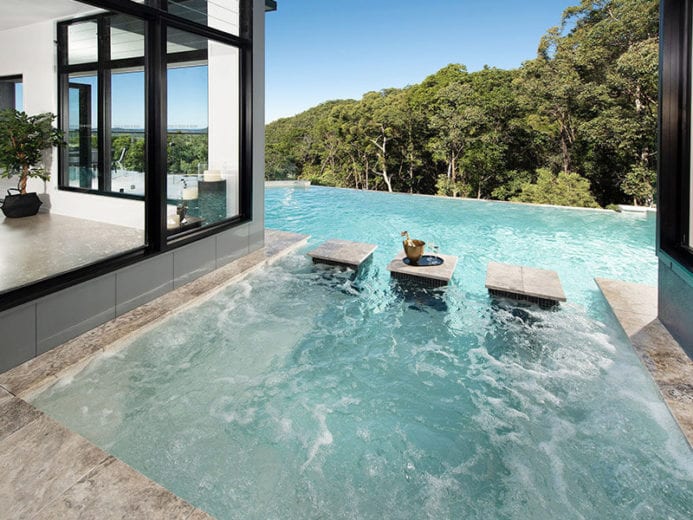
When is demolishing a building the correct decision?
Strategies for redevelopment of existing dwellings can also include variations like lifting, sliding and relocation to maximise available building footprint and comply with town planning conditions.
Many property investors deliberate over the cheapest rebuild options instead of looking at the big picture to find the absolute best long term use and ROI for their chosen development.
As always, research is the key, including seeking specific advice from qualified professionals.
Listing possible scenarios for redevelopment and then eliminating via feasibility estimates and ease of development approvals will bring you closer to the answer than your own interpretation of the building inspection report and the local chippy taking a guess at refurb costs.
Once you have narrowed down your strategy enough to formulate a design layout, take the time to sketch site and floor plans for a few separate proposals. Take into account your budget, lending capacity, expected time lines for delivery, exit strategy, current market and similar project performance by way of a comparative market analysis.
Consult a qualified builder with similar project experience to give appraisals on your proposed renovation or building work including duplex and splitter options. Have your goals in mind but be sure to ask for recommendations on developing your property on a budget as their professional experience may offer insights and ideas you may not have realised were possible.
Ball park budget, project objectives and extent should be openly discussed at this stage to allow more efficient scheduling and cost estimates, remember a quick paint job and new toilet seat may satisfy a tenant but never a prospective buyer.
Once you have detailed the scope of the work, you can then decide to manage your own project or contract a registered builder?
Depending on the extent of building work you may be able to project manage your own renovation for work that does not require council building approval. Refurbishment of an existing home will generally not require council approval unless floor areas, bracing walls and roof lines are altered, plumbing fixtures being moved or altered can be self-certified by a licenced plumber. Bear in mind though Qld Building and Construction Commission laws require a licence to carry out any building work over $3300, discuss all proposed building work with a private certifier to be on the safe side before commencing any work.
Opportunity abounds for those who are prepared and a major part of the prep will be to gather a team of trusted professional partners with the skills and experience to complement your own because with proper research the rewards are satisfying in more ways than one.
Never be so busy making a living that you forget to make a life, then together, we can make this world a better place.
The Issue of Sales & Marketing – Stick to Your Strengths

While building work has been slower I have been reducing costs and moonlighting as my own marketing team.
As I ponder over website SEO, adwords, social media, magazine articles, blogging and constant lead generation tactics that take me away from my core skills as a residential Builder, I often wonder if we are all just more adept at blocking out the noise of advertising.
All the while I am reinventing myself as an online digital marketing guy instead of hammering nails into wood. Actually after thirty years in the building industry and the last eighteen years operating my own building company, I have moved up from the hammer to be quite proficient at the project management, sub-contractor and client management required for high-end residential work and small scale unit developments.
I find I am asking myself “do my clients want the best builder or the best marketing team?
This helped me realise my clients deserve the best builder and unless I rise above the noise of modern life and remind them of my existence they might just settle for a lesser quality product with an impressive wrapper. As business owners it is our duty to shout from the hills that we provide a specific service that adds value, solves a problem and is comparatively priced.
This is why we should stick to our strengths and employ others to complete tasks that we lack experience in. Building and development of property is the same, many people you know will have advice on the best way to approach your next investment project but unless they have recent experience their advice may not take in the big picture and possible pitfalls.
Opportunity abounds for those who are prepared and a major part of the prep will be to gather a team of trusted professional partners with the skills and experience to complement your own because with proper research the rewards are satisfying in more ways than one.
Never be so busy making a living that you forget to make a life.
Dual Key – Air BNB
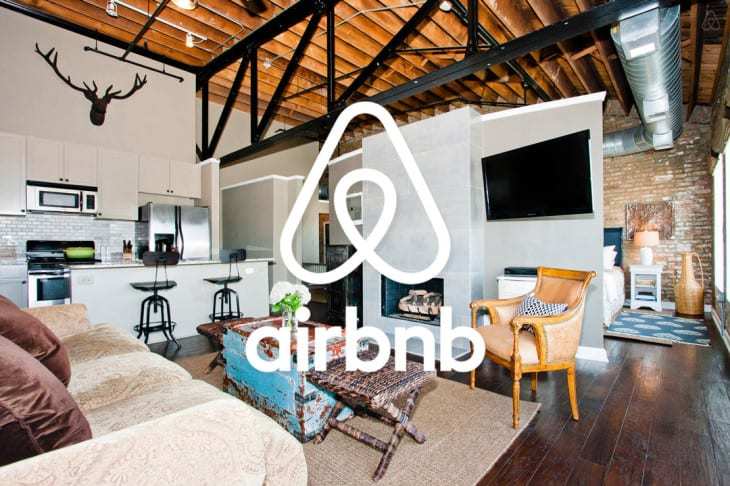
Dual Key – Air BnB
Your guide to passive income
It’s official Air BnB the global room sharing app has disrupted short stay accommodation around the world and is driving down hotel rates at some of the larger chains. Airbnb is a website for people to list, find, and rent lodging. It has over 1,500,000 listings in 34,000 cities and 190 countries.
Now the average home owner can easily capitilise on this modern technology trend by cleaning out the spare room, creating an account and opening the front door to the world.
Air BnB landlords enjoy the increased activity and excitement of welcoming new people into their home on a regular basis and earning additional income from sharing part or all of your home has proven to be very popular helping the company grow exponentially since 2008.
Of course if personal space and privacy are important to you then renting out a room may not appear to be a viable option and when holiday renting your entire home seems like too much hard work, what are your options?
Dual key homes provide a completely separate part of your home, self-contained and fully council approved and are the most popular investment property trend. Traditional small development options were to build units, a duplex or even add a granny flat to an existing home to maximise the rental income available from a single allotment but the most affordable and cost effective is to build a new Dual Key Home.
Appearing from the outside like a conventional home and available in multiple configurations to suit land shape, style and budget, these multi-tasking homes are coming to a suburb near you.
New home buyers can appreciate the flexibility offered by the separate living spaces allowing guests, students or elderly parents to stay independently from the main home and maintain privacy or interact as desired.
Regardless of age, lifestyle, location or demographic this new style of home is in demand across the country.
First home buyers can more easily make home repayments with the added rental income.
Professional couples and investors appreciate the proven 30% increase in rental income which positions Dual Key Homes in positive cashflow territory.
The ability to downsize and earn additional income without relocating has many baby-boomers and soon to be empty-nesters excited about retirement.
Now while the upside is overwhelming, investing in property is a serious business with long term benefits and ramifications for the uninformed, research is the key to finding the location, property and finance that best suits your personal situation.
Do more than search online, drive or walk around your shortlisted suburbs to get a feel for the liveability of an area before entering a sales office.
Even if you are an investor who does not plan to live in the Dual Key Home look for a growth area with employment opportunities to ensure you can source the best possible tenants.
Schedule a meeting with your accountant or a (non-affiliated, full disclosure) financial planner to discuss tax incentives, depreciation schedules and potential capital growth scenarios.
When you are comfortable with your capacity and requirements investigate non traditional options online to buy wholesale property via Revalu8 which like Air BnB acts as a middleman for the sales process.
If you choose to purchase land to build on or an existing house/land package in an estate consider similar products available from competing agents and enquire about the building companies list of repeat clients (clients who have contracted the same home builder more than once) to ascertain if they were motivated by price or quality.
Be pushy, this is a huge investment of your time and money, ask for some contact numbers and gauge your decision based on the sales agents response or lack of.
If you do get some numbers give them a call, if not drive/walk the suburb on the weekend to find people washing cars, gardening and making improvements to their homes and casually ask the following –
I love your home, did you purchase this home new and who was the builder?
Ask about call-backs or issues during the build and how seriously they responded?
Would they build with them again or refer a friend?
Ask how do valuations stack up for home loans in this area which is a great way to tell if the sales packages are overpriced?
This is not generally a problem when buying from a land estate sales office but more common when purchasing at investment seminars spruiking house/land packages in a faraway “growth suburb” or boom town.
Remember slow and neat that’s the treat, investing is a long term strategy requiring thorough research before the purchase and regular monitoring of your asset during to ensure maximum gains are maintained.
Your future self depends on it and will be grateful for your patience and diligence while kicking back/sipping a drink in early retirement.
In the interests of full disclosure the author Royce Beale is a director of Optam Building Group
At Optam we design, build and develop residential property with a sustainable approach for lifestyle and investment
We strive to engage and support ongoing relationships with customers interested in long term strategy and building a portfolio of appreciating assets

